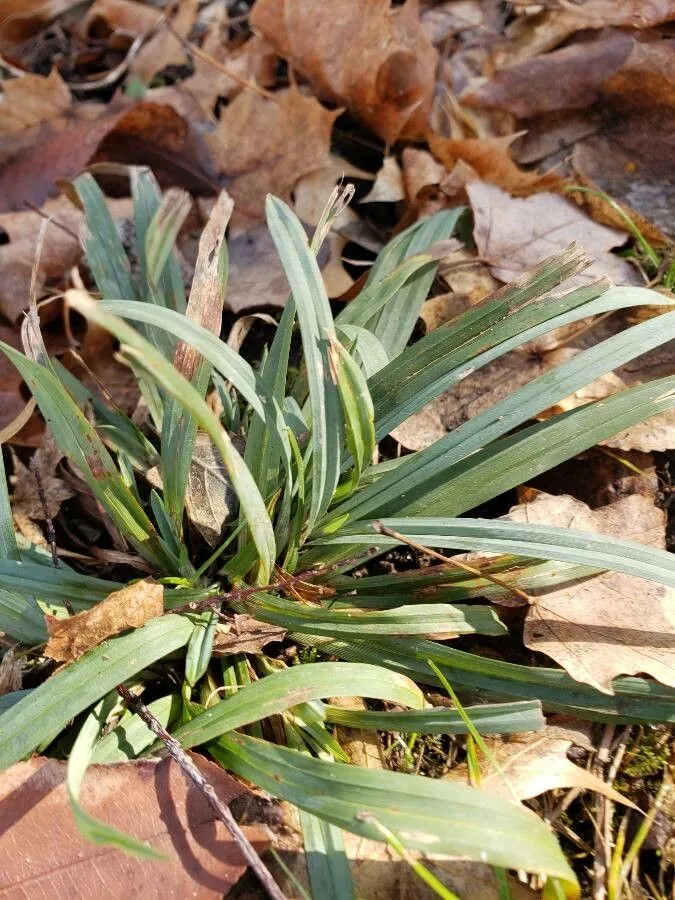
Author: Dewey
Bibliography: Amer. J. Sci. Arts, ser. 2, 2: 245 (1846)
Year: 1846
Status: accepted
Rank: species
Genus: Carex
Vegetable: Unknown
Observations: C. & SE. U.S.A.
Thinfruit sedge, known scientifically as Carex flaccosperma, is a notable species within the Cyperaceae family. It was first described in 1846 by Dewey in the American Journal of Science and Arts, series 2, volume 2, page 245. This plant is indigenous to the central and southeastern regions of the United States, where it is often observed thriving in its natural habitat.
Characteristically, Carex flaccosperma, as its common name suggests, is distinguished by its slender and somewhat floppy fruits. The morphological features of this sedge make it easily identifiable among other species in the Carex genus. The leaves are typically long and narrow, contributing to its overall delicate appearance. Its inflorescence, or flower cluster, is similarly slender, providing a graceful aesthetic that can complement a variety of landscapes.
Ecologically, thinfruit sedge plays a significant role in its native ecosystems. It is often found in moist, shaded environments such as forest understories and along stream banks, where it helps prevent soil erosion and supports local wildlife. Its adaptability to different soil types and moisture levels makes it a resilient and valuable component of the plant community.
Gardening enthusiasts and conservationists alike value Carex flaccosperma for its understated beauty and ecological benefits. When used in garden design, it can add a touch of elegance to shaded garden beds or naturalized areas. Additionally, its presence in conservation efforts is crucial for maintaining the health and stability of native plant populations and the wider ecosystem.
Overall, Carex flaccosperma is a species that exemplifies both the subtle beauty and ecological importance of native sedges. Its enduring presence in the central and southeastern United States underscores the value of preserving native flora and promoting biodiversity.
Eng: thinfruit sedge
En: Thinfruit sedge, Thin-Fruit Sedge
Taken Jan 6, 2022 by William Coville (cc-by-sa)
Taken Jan 6, 2022 by William Coville (cc-by-sa)
Taken Jan 6, 2022 by William Coville (cc-by-sa)
Taken Jan 6, 2022 by William Coville (cc-by-sa)
Taken Jan 6, 2022 by William Coville (cc-by-sa)
Taken Jan 6, 2022 by William Coville (cc-by-sa)
Taken Jan 6, 2022 by William Coville (cc-by-sa)
Taken Jan 6, 2022 by William Coville (cc-by-sa)
Taken Jan 6, 2022 by William Coville (cc-by-sa)
Taken Jan 6, 2022 by William Coville (cc-by-sa)
Taken Jan 1, 1900 by EOL − USDA NRCS Wetland Science Institute. (public)
© copyright of the Board of Trustees of the Royal Botanic Gardens, Kew.
Family: Myrtaceae Author: (F.Muell.) K.D.Hill & L.A.S.Johnson Bibliography: Telopea 6: 402 (1995) Year: 1995 Status:…
Family: Rubiaceae Author: Pierre ex A.Froehner Bibliography: Notizbl. Bot. Gart. Berlin-Dahlem 1: 237 (1897) Year:…
Family: Sapindaceae Author: Koidz. Bibliography: J. Coll. Sci. Imp. Univ. Tokyo 32(1): 38 (1911) Year:…
Family: Asteraceae Author: A.Gray Bibliography: Pacif. Railr. Rep.: 107 (1857) Year: 1857 Status: accepted Rank:…
Family: Fabaceae Author: Medik. Bibliography: Vorles. Churpfälz. Phys.-Ökon. Ges. 2: 398 (1787) Year: 1787 Status:…
Family: Aspleniaceae Author: (Cav.) Alston Bibliography: Bull. Misc. Inform. Kew 1932: 309 (1932) Year: 1932…